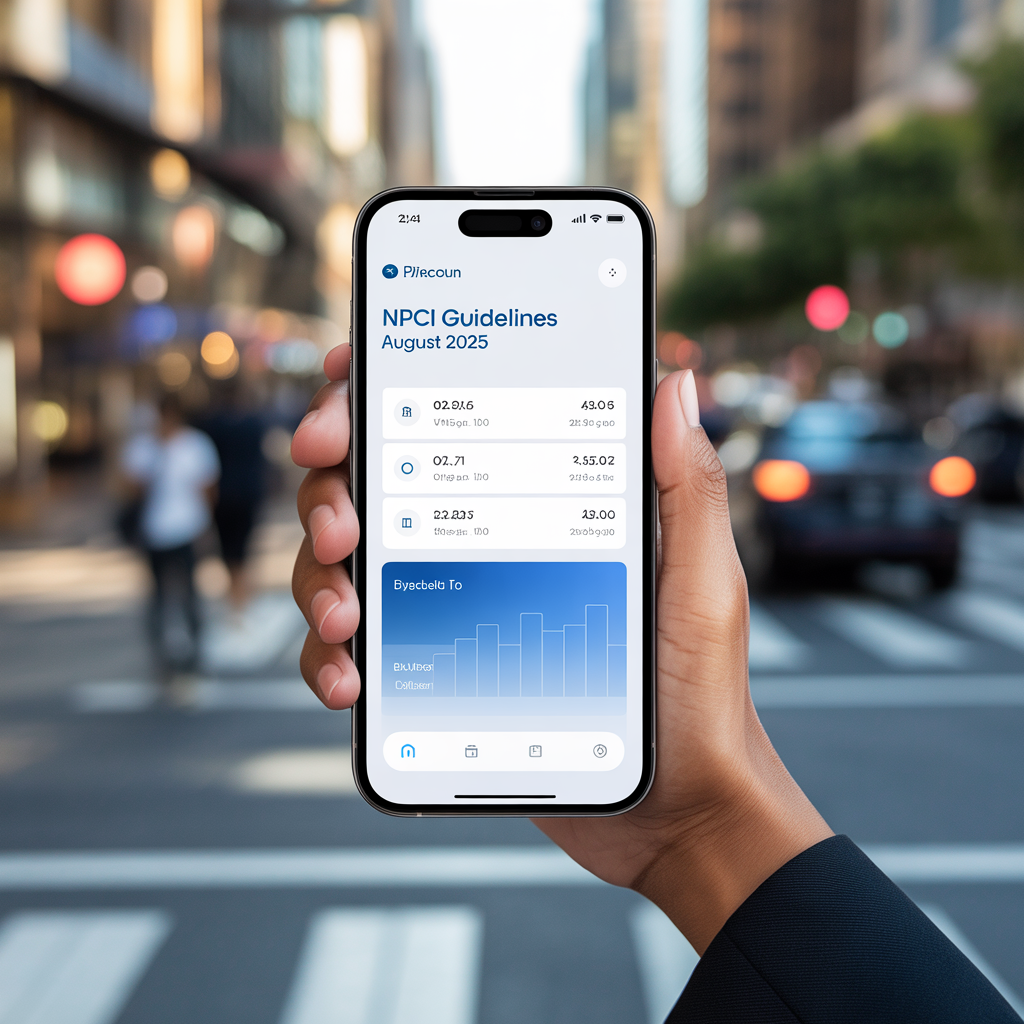Caps on Balance Checks and Auto‑Pay Mandates Aim to Reduce System Load
Starting 1 August 2025, the National Payments Corporation of India (NPCI) has implemented sweeping changes to Unified Payments Interface (UPI) usage. The new rules impose daily limits on balance inquiries, restrict bank‑account listing via API, and enforce time‑bound execution for autopay mandates, aiming to improve system efficiency and transaction reliability.
Immediate Effects on UPI Users
- Balance check capped at 50/day per app: Users can initiate up to 50 balance enquiries per UPI app in a rolling 24‑hour period. Automated checks by apps are not allowed; instead, each successful UPI transaction will now display the account balance automatically (Reddit)
- List Account API limited to 25/day: Retrieving linked accounts via mobile number is restricted to 25 requests per user per app per day. Users must explicitly select their bank before initiating a retry (Economic Times).
- Pending transaction status checks capped at 3: Users can check the status of a “processing” transaction a maximum of three times, with a minimum 90‑second interval between attempts, and only within two hours of the transaction. (mathrubhumi)
Autopay Rules and Peak‑Hour Restrictions
- Mandate execution restricted to non‑peak slots: Autopay mandates (e.g., SIP, OTT, insurance payments) must run during non‑peak hours only—before 10:00 AM, between 1:00–5:00 PM, or after 9:30 PM. Each mandate can attempt up to four times (initial + three retries) (Economic Times).
- Non‑customer initiated API calls blocked during peaks: API requests not initiated by the user (system‑triggered checks) are disallowed between 10:00 AM–1:00 PM and 5:00 PM–9:30 PM to preserve backend stability. (mathrubhumi)
Background & Implementation Timeline
NPCI issued these guidelines via a compliance circular on 21 May 2025, with a deadline for all banks and third‑party providers (PSPs) to implement changes by 31 July 2025 (The Economic Times)
Failure to comply may lead to API access restrictions, suspension of onboarding new users, or monetary penalties, according to NPCI directives (indiafirstlife.com)
Why NPCI Took Action

With over 18 billion UPI transactions monthly, frequent server slowdowns and service disruptions arose from heavy non‑transactional API calls—especially balance checks and status polls (mathrubhumi).
NPCI’s goal is to strike a balance: limits should be sufficient for general user convenience while discouraging repetitive, unnecessary system calls that cause outages. (mathrubhumi)
Impact on Users and Services
◾ High‑frequency users
Those habitually checking balances or relying on autopay for recurring obligations may experience slight delays or missed execution windows.
◾ Developers & PSPs
UPI app developers must ensure compliance. Systems need to throttle API calls, queue requests, and adhere to the new operational windows to avoid penalties.
◾ General users
For day‑to‑day users, these changes will be mostly invisible. Automatic balance display post‑transaction and limited retries are designed to minimize disruption.
Summary of Key Limits
| Action | Previous Practice | New Limit (per app/user) |
|---|---|---|
| Balance inquiries | Unlimited | Max 50 calls per 24 h |
| View linked bank accounts | Unlimited | Max 25 calls per 24 h |
| Check pending transaction status | Unlimited retries | 3 checks within 2 hours (90‑sec gap) |
| Autopay mandate executions | Anytime | Only during non‑peak hours; 1+3 attempts |
| System‑initiated API calls | Unrestricted | Blocked during peak times |
Official Responses and Expert Views
In its press release, NPCI emphasised the need for these rules to maintain scalability and performance in the face of surging daily transaction volumes. (ProCapitas)
Industry experts, such as Rohit Mahajan of Plutos ONE, voiced support, noting that the changes balance user convenience with network resilience and reduce congestion at high‑velocity platforms (The Economic Times)
User Advice: How to Adapt

- Avoid unnecessary balance checks, as they count against your daily limit.
- Monitor pending transactions carefully, but wait at least 90 seconds before retrying.
- Be aware of auto‑debit timing—if your OTP or mandate fails, retries may occur outside business hours.
- Use multiple UPI apps if needed—limits apply per app independently.
- Expect beneficiary name validation features to appear before final approval (as mentioned in NPCI and industry updates) (manorama)
🧭 Why This Matters
These rules are not about limiting user freedom—they’re designed to protect service reliability, ensure smoother payments, and prevent unnecessary load on critical financial infrastructure.
As UPI continues to expand rapidly, robust governance and API throttling become indispensable for sustainable digital payments in India.
“UPI is maturing. These guidelines are akin to introducing speed limits on digital highways,” commented a fintech analyst.
Recent NPCI reforms highlight that India’s digital rails are evolving—and institutionalising—toward long-term resilience.
These changes apply across the entire UPI ecosystem, including banks, payment apps (such as PhonePe, Google Pay, and Paytm), and other third-party providers.




